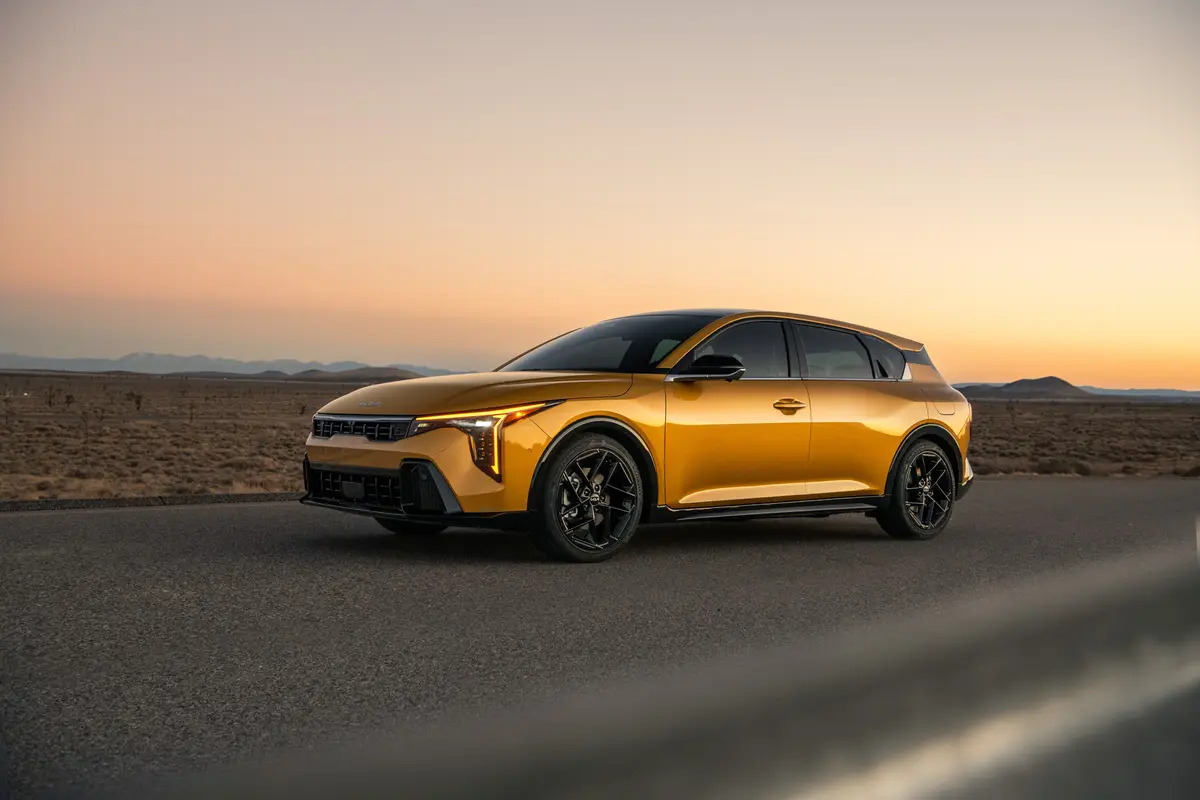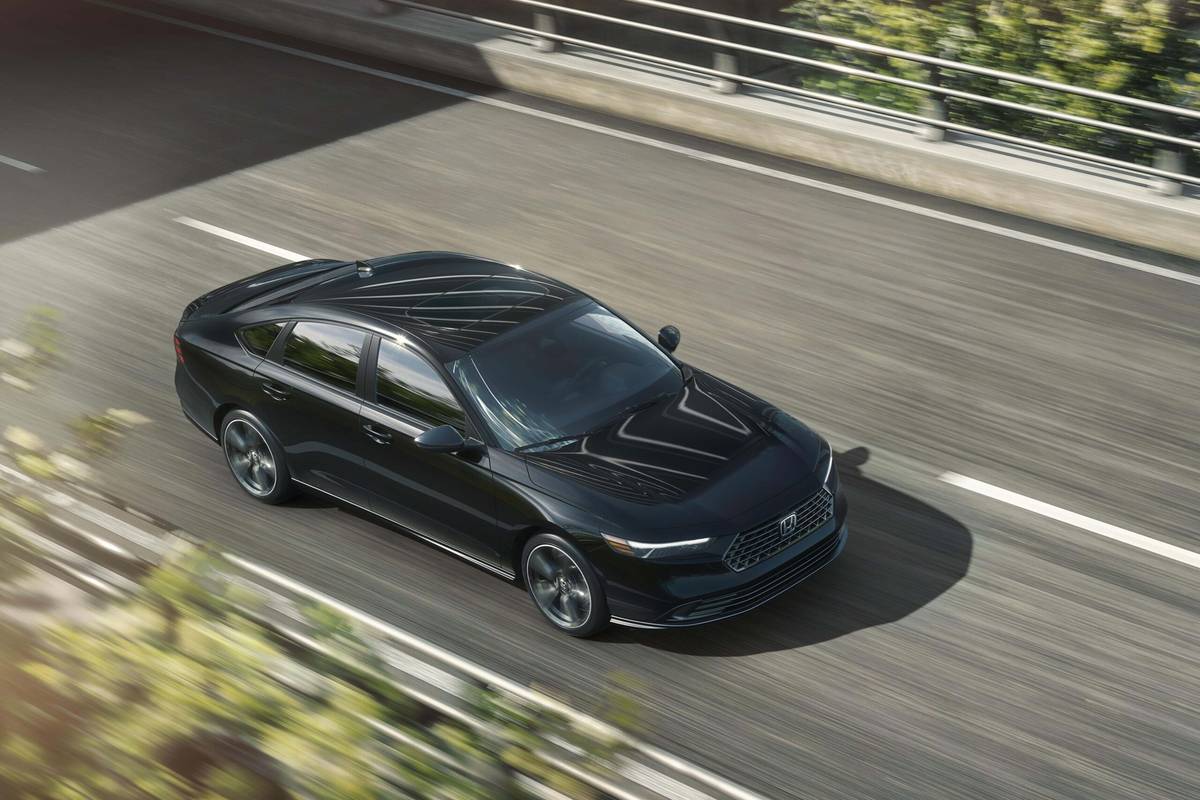washingtonpost.com's view
Mary Anne laughed. “It’s, it’s . . . “
“Ugly,” I said, guessing to complete her sentence.
“No,” she said, surveying the 1999 Isuzu Ironman VehiCross. “It’s weird, kind of stupid-looking, but it looks like fun.”
I’ve learned, after years of failed counterattacks, not to argue with my wife. The trick is to appear to agree without being obviously passive-aggressive.
“It’s not for everyone,” I said, and Mary Anne doubled over in laughter. “Not . . . for . . . everyone?” she asked, gasping for air between guffaws. “You’re going to write that?”
What else could I say? The VehiCross sport-utility vehicle is a deliberately odd piece–a cross between lunar rover and military assault vehicle, sport-utility vehicle and family sedan.
With its space-odyssey headlamps, pinch-mouthed grille, polypropylene lower-body cladding, ribbed doors, squinched rear window and bubble tailgate, it looks like nothing else on the road.
This is largely why the VehiCross drew much attention at the 1993 Tokyo Motor Show, where it was introduced as a concept vehicle. Spectators praised it for being innovative and forward-thinking. Others heaped scorn. No one ignored it.
Isuzu began selling the VehiCross in Japan. The hybrid truck-car, which is based on a short-wheelbase Isuzu Trooper sport-utility, won Japan’s 1997 “Car of the Year” award. Isuzu Motor Ltd. officials believed they could sell the thing in the United States. It went on sale here this spring.
My hunch is that there are enough in-your-face folks out there to give the VehiCross a fighting chance, especially since it will trickle into the United States at the paltry rate of 200 vehicles a month. That slow intro isn’t a marketing scheme, it’s a matter of production. Much of the body and final assembly work on the VehiCross is done by hand, a costly and time-consuming process.
But what comes out is a fast, solid, multi-capable vehicle that runs well on the road and proves highly competent in the brush, or when used to haul away 1,200 pounds of schoolbooks, which is one way it was pressed into service during my test-drive week.
Whether or not Isuzu went overboard in styling the VehiCross remains to be seen. Personally, I like its uppity wackiness. What other sport-ute or hybrid comes with Recaro Trend front seats, stitched in black and red leather and accented by stylized carbon-fiber door trim?
But I’m only one vote, and a skewed one at that. I don’t mind being laughed at. Matrimony has given me lots of practice. Question is, how many other people out there are willing to risk public ridicule to drive something truly different–at a price approaching $30,000?
1999 Isuzu Ironman VehiCross
Complaint: That squinched rear window, the result of sitting in the middle of the tailgate bubble that encloses a 17-inch-diameter spare tire, seriously compromises rearview vision. I used the side mirrors to check traffic back there. Isuzu in Japan got around this problem by install ing a fish-lens rearview camera at the base of the bubble and a small monitor in the dashboard. That arrangement isn’t sold in the United States.
Praise: Overall, the VehiCross is one of the best-equipped, best-engineered sport-utility hybrids available. An example is Isuzu’s impressive Torque on Demand all-wheel-drive system, which automatically shifts drive power from rear wheels to front wheels based upon sensor readings of road conditions, driver input and other factors. The system comes with a four-wheel-low gear for off-roading and other rough going.
Head-turning quotient: Cheers and boos enthusiastically given in ample and equal amounts.
Ride, acceleration and handling: Short wheelbase generally equals a more bumpy ride; and you surely can feel the bumps in the tested Ironman version of the VehiCross. But the bumpiness isn’t brutal, thanks to Isuzu’s use of double-acting, gas-pressurized shock absorbers made of aerospace-grade extruded aluminum . Remarkab ly stable in t urns and in lightly and fully loaded modes. Excellent braking. Brakes include ventilated four-wheel discs with standard anti-lock backup.
Engine: Equipped with a 3.5-liter, 24-valve double-overhead-cam V-6 that produces 215 horsepower at 5,400 rpm and 230 pound-feet of torque at 3,000 rpm. Mated to a four-speed automatic transmission.
Capacities: Seats four people. Cargo capacity 13.9 cubic feet with rear seat up and 50.4 cubic feet with rear seat down. Fuel capacity is 22.5 gallons of regular unleaded (premium recommended for maximum performance).
Mileage: About 17 miles per gallon city-highway driving, lightly and fully loaded. Estimated range is 368 miles on usable volume of fuel.
Price: Base price is $28,900. Dealer invoice is $24,710. Price as tested $30,975, including $1,380 in options (such as the mostly cosmetic Ironman package) and a $695 destination charge.
Purse-strings note: Compare with upscale versions of Toyota RAV4, Honda CR-V, Subaru Forester.
Latest news



